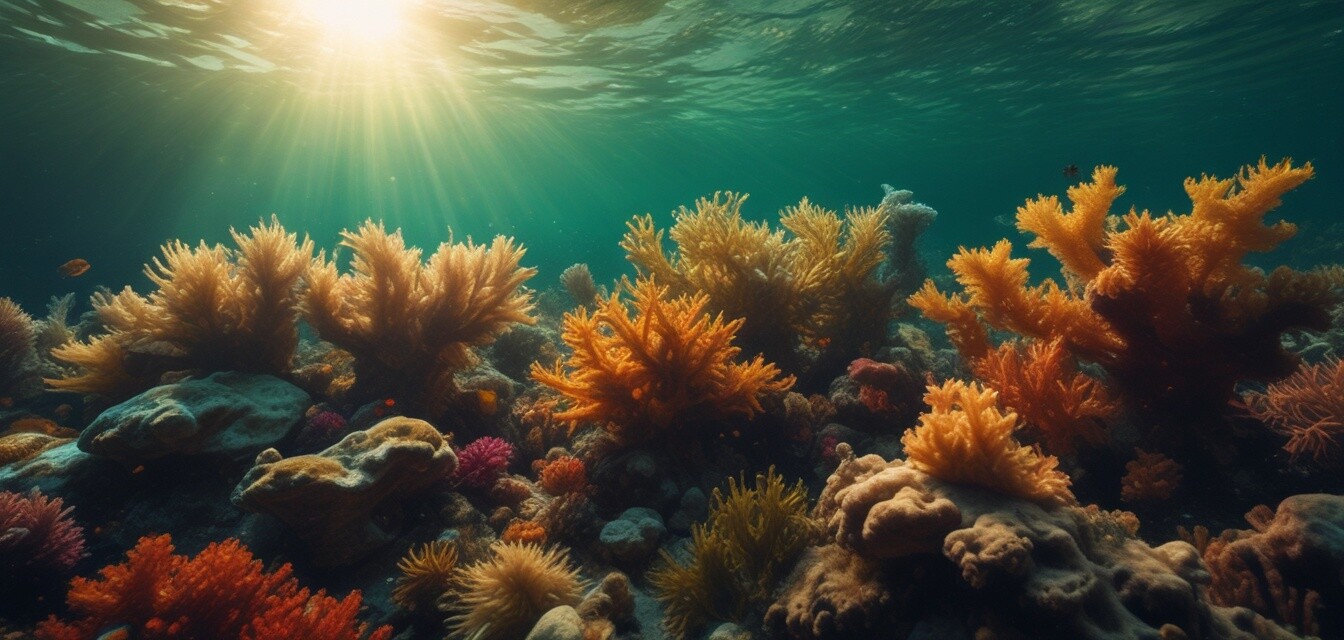
How to Photograph Underwater Textures in Detail
Key Takeaways
- Understanding light and motion is crucial when photographing underwater.
- Utilizing different angles can enhance textural details in underwater photography.
- Post-processing techniques can significantly improve the appearance of underwater images.
- Investing in the right underwater gear can elevate your photography skills.
- Experimenting with various techniques will help you discover your unique style.
Capturing underwater textures reveals the hidden beauty of the aquatic world. In this article, we will explore effective techniques to enhance your underwater photography skills, specifically for intricate textural details such as coral, sand, and aquatic vegetation. Whether you're a beginner or have some experience, you will find tips that suit your level.
Understanding the Environment
Before diving in, it's essential to understand the underwater environment. Factors such as light, water clarity, and movement can influence your photographs dramatically. Here are some aspects to consider:
- Natural Light: Water absorbs light differently, leading to color loss as you descend deeper. Early morning or late afternoon often provides the best lighting conditions.
- Water Clarity: Polluted or cloudy waters can diminish your ability to capture detailed textures. Something to check before making a shot.
- Current: Strong currents may hinder your ability to frame your shot accurately. Understanding how to navigate them is critical.
Essential Gear for Textural Photography
The right gear is crucial for capturing the stunning textures underwater. Below are some of the primary tools you might consider:
| Gear Type | Importance |
|---|---|
| Underwater Camera | Critical for capturing images submerged. |
| Waterproof Housing | Protects your camera from water damage. |
| Macro Lens | Great for capturing fine details in textures. |
| Lighting Equipment | Helps illuminate subjects in low-light conditions. |
| Floatation Gear | Enhances stability to maintain a steady shot. |
Techniques to Capture Underwater Textures
Now that you understand the basics and have the right gear, it’s time to develop your shooting techniques. Here are some effective ways to improve your underwater texture photography:
Use Different Angles
Experiment with various angles to highlight textures:
- Shooting from above can reveal the patterns of the seabed and aquatic plants.
- Getting close-up shots of coral reefs can showcase intricate designs.
Utilize Natural Light
Natural light can significantly enhance textures. Follow these tips:
- Aim to shoot during the "golden hour" when the sun is low in the sky.
- Position yourself so that light beams illuminate your subject directly.
Post-Processing Techniques
After taking your shots, it’s essential to enhance them through editing. Consider these techniques:
- Adjusting contrast can help textures pop.
- Enhancing colors can bring out the vibrant hues of the underwater world.
- Sharpening tools can help highlight fine details.
Challenges in Underwater Photography
Every photography style comes with its set of challenges. Here are some to consider:
- Visibility: Water conditions can change, affecting how well you see and capture textures.
- Equipment Limitations: Each camera has its own limitations, and moisture can be problematic.
- Wildlife Interference: Fish or other sea life may disrupt your shots unexpectedly.
Pros
- Unique and stunning imagery can be created.
- Enhances your skills and understanding of photography.
- Encourages appreciation of underwater ecosystems.
Cons
- Requires significant investment in quality gear.
- Environmental conditions can limit shooting opportunities.
- Can be physically demanding and requires training.
Conclusion
Photographing underwater textures opens up a whole new world of creativity and artistry. By equipping yourself with the right gear, understanding your environment, and mastering various techniques, you are sure to enhance your underwater photography skills significantly. For more classic tips and techniques, explore our [Buying Guides](/blog/buying-guides) or learn about the latest in [Underwater Lighting](/products/underwater-lighting).
With practice, patience, and creativity, you’ll be able to capture the breathtaking textures underwater in incredible detail, making your images stand out. Don’t forget to explore additional guides on [Diving Equipment](/products/diving-equipment) and [Lenses for Underwater Photography](/products/lenses-for-underwater-photography) to further enhance your photography journey!

